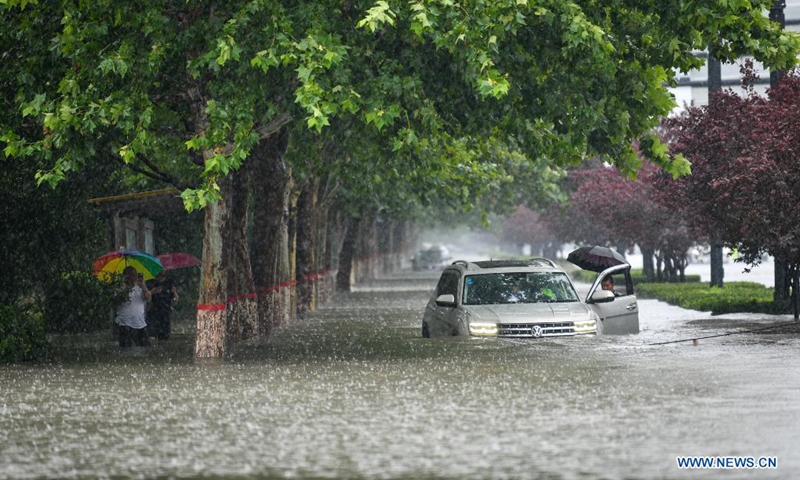
A car is inundated by rainwater in Zhengzhou, capital of central China's Henan Province, July 20, 2021. More than 144,660 residents have been affected by torrential rains in central China's Henan Province since July 16, and 10,152 have been relocated to safe places. Photo: Xinhua
The aim to build a sponge city is to improve modern cities' capacity to regulate water resources and the project is normally only designed to handle moderate and light rain, rather than the once-in-a-hundred-year rainstorm in Zhengzhou, Chinese experts explained, as a BBC report claimed that the floods had "broken a myth" of sponge city that Zhengzhou invested more than 50 billion yuan ($7.7 billion) to build.
China is never meant to build "a myth" by the sponge city project, but only to improve city construction. How could they say "broke a myth?" Lü Xiang, a research fellow at the Chinese Academy of Social Sciences in Beijing, said.
The report, released on Wednesday, said that Zhengzhou had invested a lot to build a sponge city with a strong capacity of flood control and drainage. But the recent rainstorm broke the myth.
Other foreign media like Wall Street Journal and Financial Times have also written articles questioning the Zhengzhou government's response to the floods and the value of a huge investment in the "sponge city" project.
Chinese observers refuted the reports, noting that these media reiterated the loss, but neglected one fact that the floods in Zhengzhou is a once-in-a-century occasion and beyond any city's bearing capacity. They noted that the Zhengzhou government has made its best efforts to limit the loss.
They also neglected the fact that, before recent extreme rainstorm, the project has helped Zhengzhou remove 125 flood points and recycle 380 million tons of water as of May since the project kicked off in 2018.
The drainage capacity of modern cities has largely declined as watercourses are occupied and rivers are reclaimed to create land. And the construction of a sponge city is aimed at improving the city's regulating capacity to abstract stored water in floods and release water in droughts, Ma Jun, director of the Institute of Public and Environmental Affairs, told the Global Times on Wednesday.
The construction of a sponge city would help cities adapt to climate change, but the record-breaking rainstorm in Zhengzhou exceeded the capacity of a sponge city, Ma noted.
Sponge city projects are normally built to handle light and moderate rain, according to experts.




